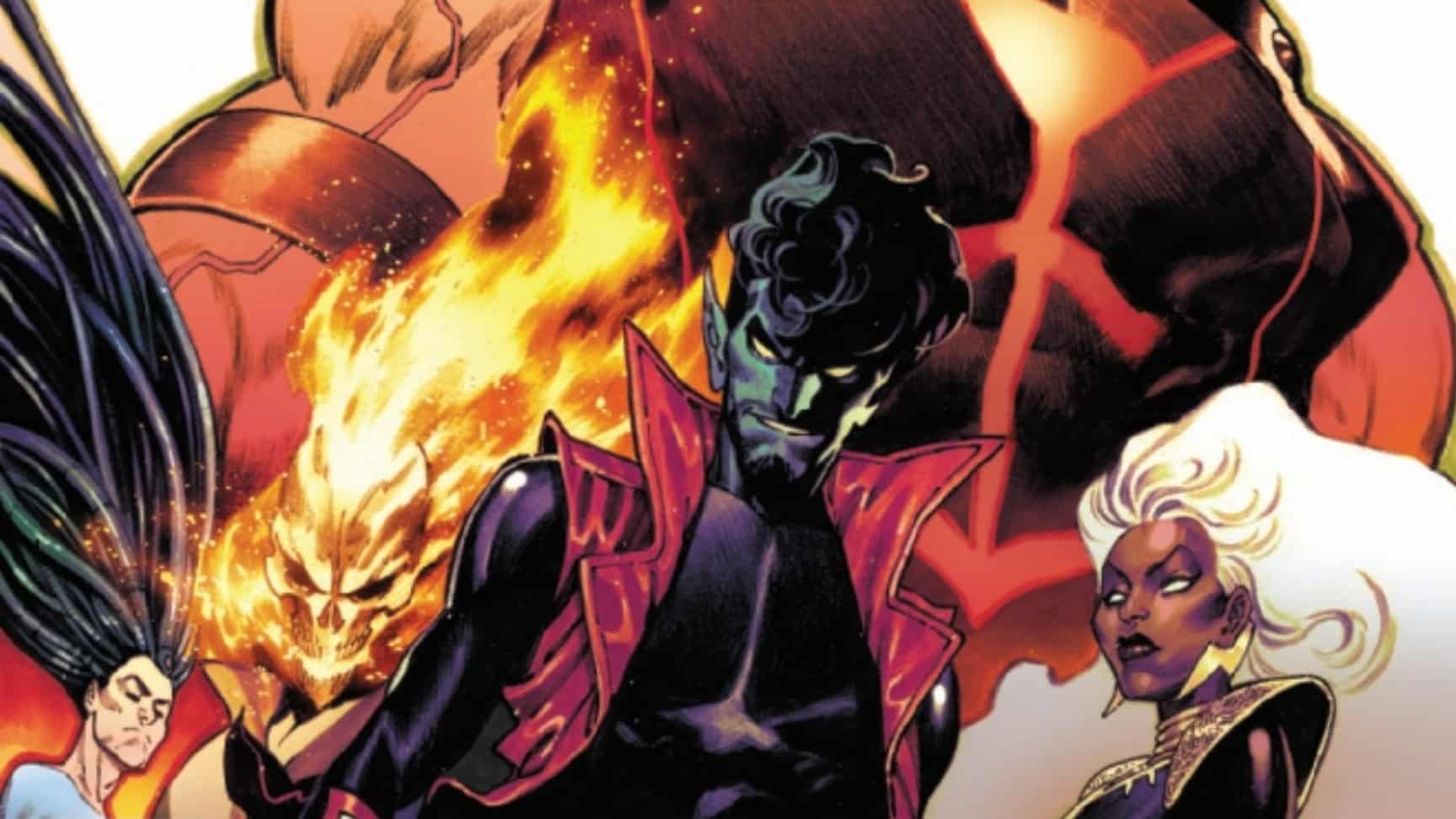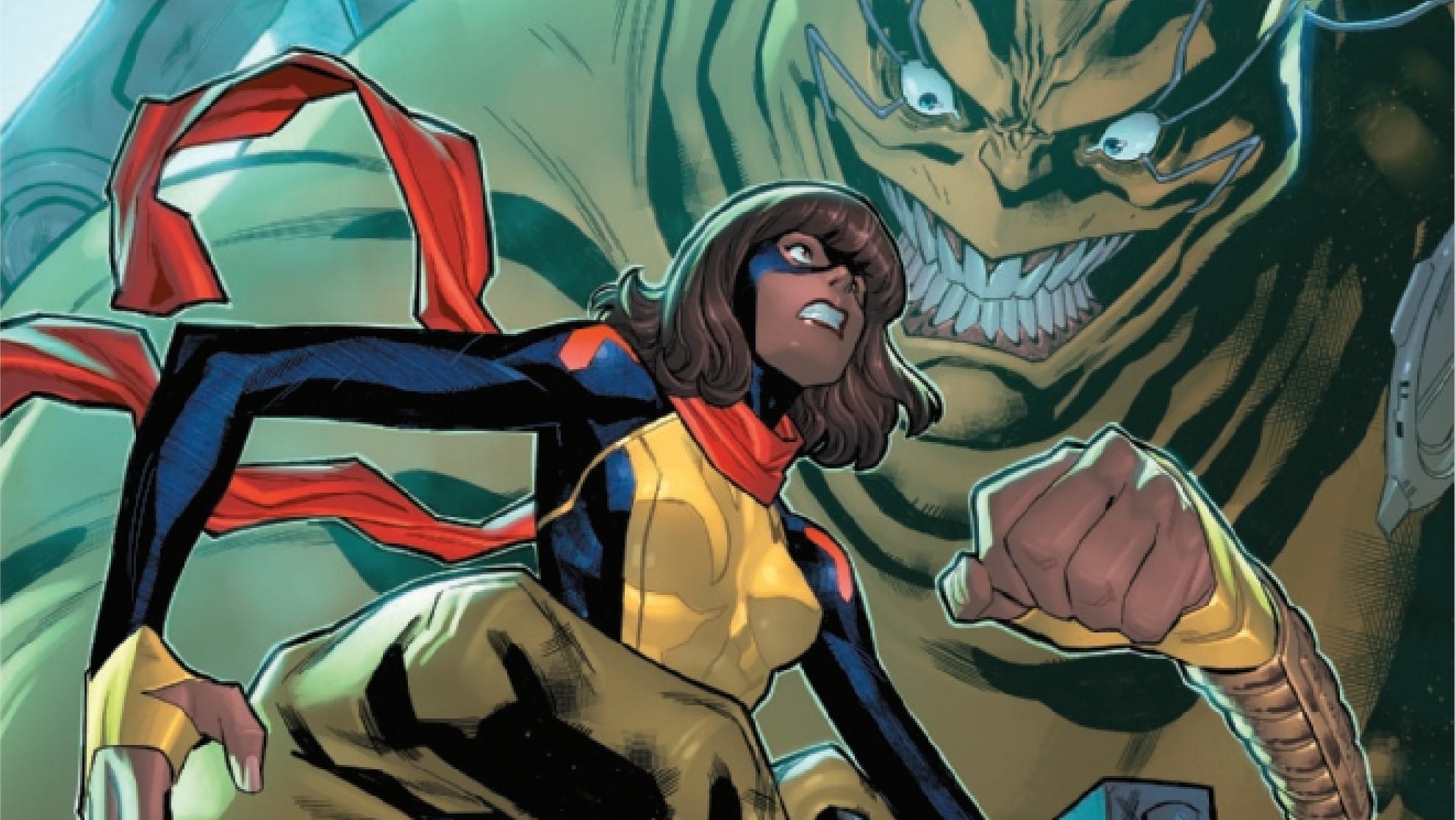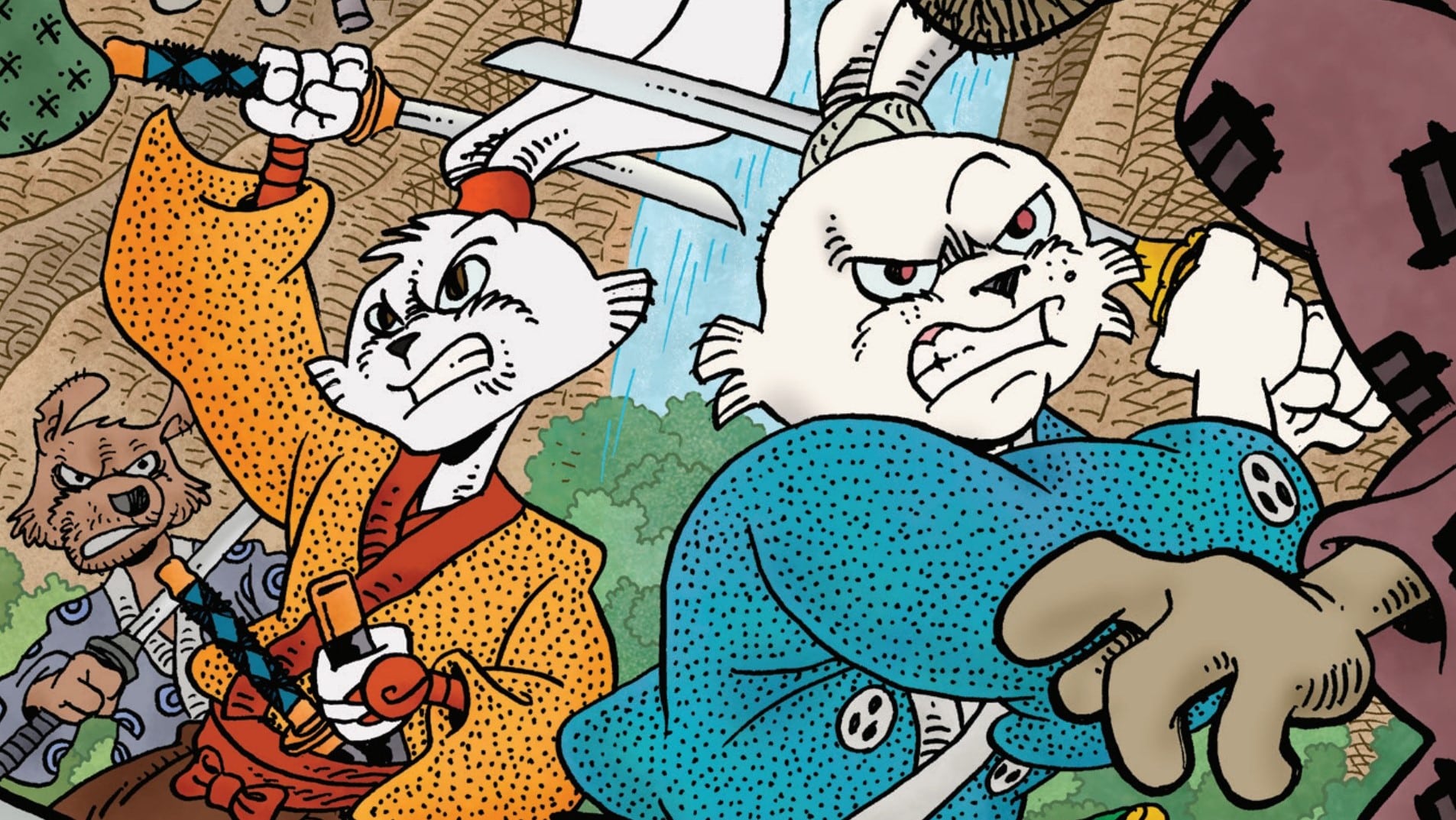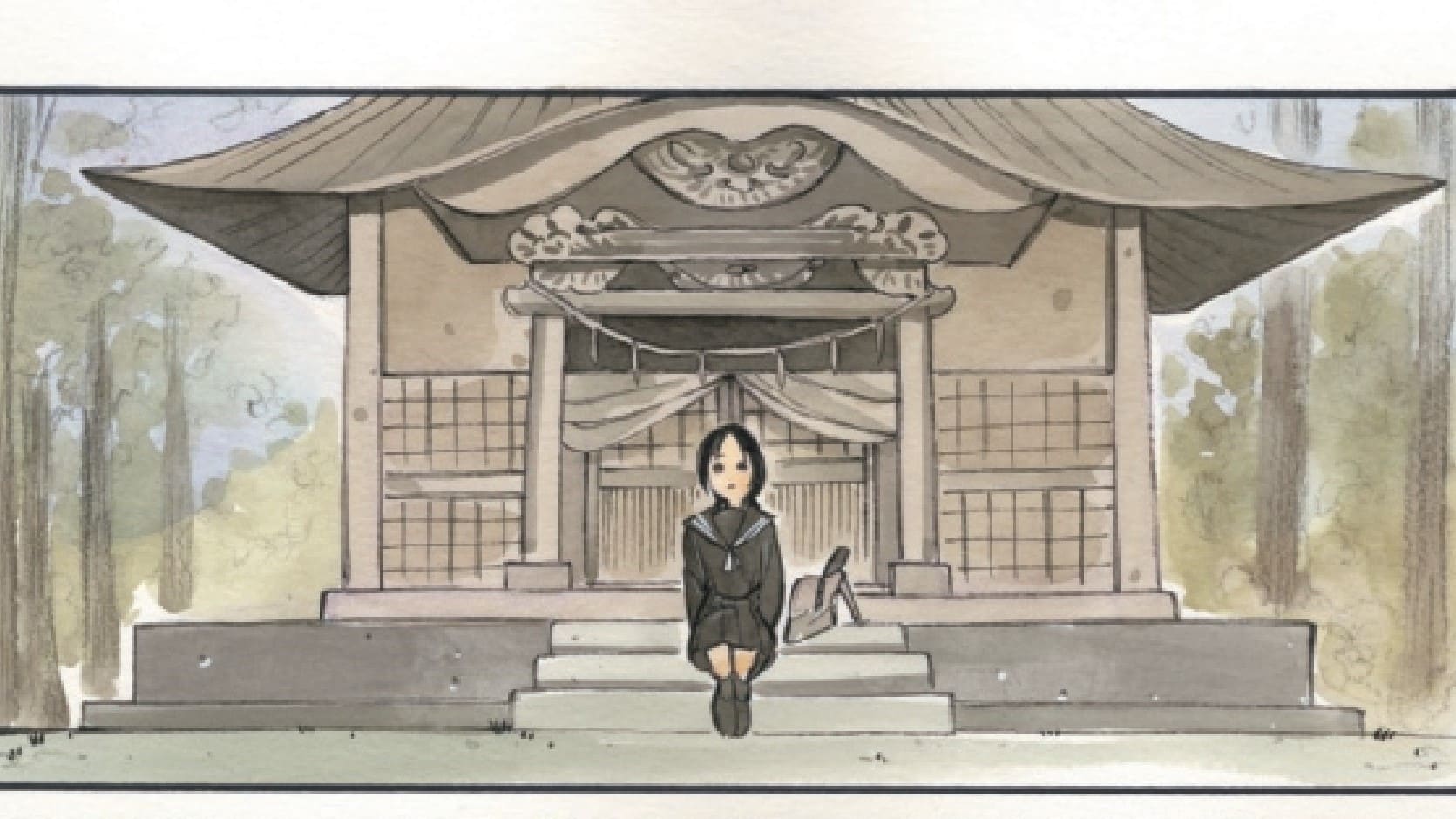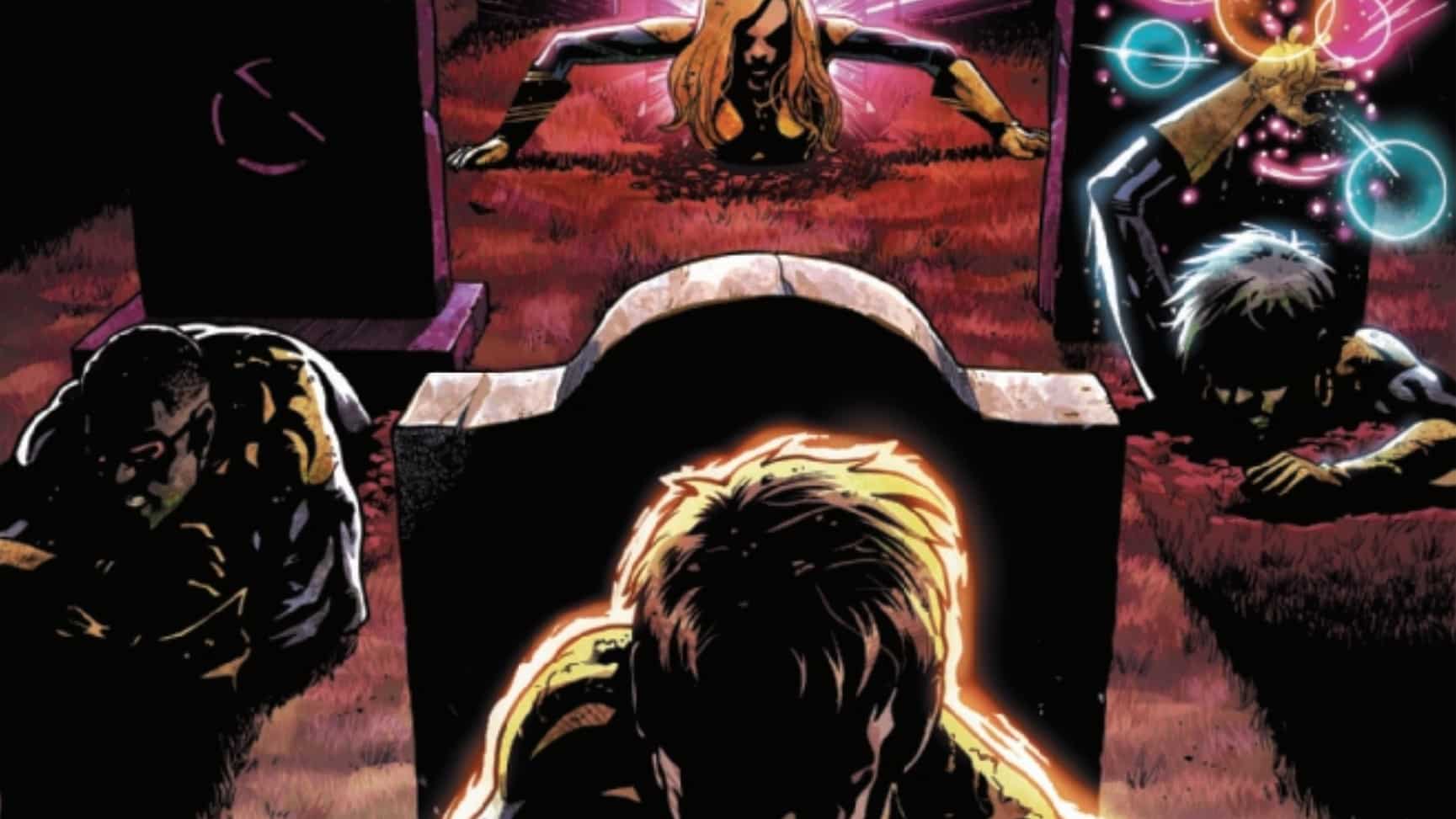Legion is possessed, the Altar and all who reside within it are under threat and a judge who can wipe people out of existence with a glance has shown up to hide the evidence of her blasphemous god summoning. This is what happens when you mess about with mutants, gods and omega-level psychics. Legion of X #5 is written by Si Spurrier, drawn by Jan Bazaldua, colored by Federico Blee, lettered by Clayton Cowles and designed by Tom Muller with Jay Bowen.
Armaan Babu: You come to expect a certain level of ridiculous chaos in a Si Spurrier book, but this might be the first time in this series where it’s felt like just the right amount of chaos. You want a convergence of mess at the end of your first arc, and we’re absolutely getting that here. With the end of the first arc, I see what everything in the previous issues was leading up to, and I have a better understanding of the choices made along the way. I still think they’re bad choices, but I understand them more! Ari?
Ari Bard: Yeah, I completely agree. I’m no longer confused. I understand what Spurrier was trying to do. I just don’t think it was very good. You have to ask yourself, “After this arc, are things in a more interesting place than they were before?” and the answer is a big, “eh?”
It Ain’t Ora Till It’s Ora

Armaan: Things start out about as badly as they can get for the people of the Altar — Switch has taken over Legion’s body. While Switch (wisely, I think) refuses to use Legion’s many locked superpowers for fear of the alternate personalities that come with them, David Haller’s a powerful telepath in his own right. More importantly, the entirety of the Altar is in David’s brain, so if he goes, so do the many souls currently trapped within … making it about the worst time possible for Ora Serrata to pop in and demand the handover of a god.
While Switch is easily dealt with (a single blow from Blindfold’s astral ghost does the trick), Ora Serrata proves more of a challenge.
Using what he learned from the god Tumult last issue, Nightcrawler exposes Ora’s plot. I’ll admit, this was a bit of a twist to me. I assumed that Ora genuinely believed in Tumult and needed a god before forcing him to flee because of her shame in believing in a higher power. The truth makes her a lot more sympathetic — she summoned a god into existence (more on that later) as a ploy to provoke civil unrest and give herself more power as the Seat of Law. However, lacking the ability to provide her new god even a modicum of true faith, Tumult was forced to flee to Krakoa just to find a believer who would let him survive.
Removed from everything else going on in the book, this is a fascinating story. A god summoned into existence by a nonbeliever, a hodgepodge of other faiths because Ora Serrata has none of her own, a god who eventually learned the power of believing in himself. I like that story. It’s sadly not a story we actually get to see, though — we only really find out about it from second- and third-hand accounts from the investigation itself.
Ari: This is exactly right. The story you just described would have been very interesting, although I don’t think it makes Ora as sympathetic as if she was simply ashamed of her own faith. I think an internal crisis of faith is much easier to get behind than someone who has none and doesn’t seem to really desire that, although the end of the issue throws even that characterization into question.
It’s a little hectic and deflating how quickly everything seems to wrap up. The conflict with Switch is dealt with in a matter of panels, and with one punch, no less. Not only that, his fate is described to us via a secondhand account, and we’ve barely heard from him directly throughout the whole arc. All of this makes him feel like a stock villain placed on the board to move the other pieces around.
Ari: Finally, Tumult and Ora Serrata sort of have a complete 180 moment that feels a little more earned but still comes too quickly. Ora has been used quite frequently in other books and has some character to her by now, so to present this as something that was going on behind the scenes the whole time feels a little strange. What feels most ridiculous, however, is the fact that an all-seeing Arakkii mutant is caught using simple, human interrogation techniques. It’s a very silly “gotcha” moment that honestly takes a lot of tension out of the situation.
Armaan: A slip of the tongue proves Ora’s guilt (the moment when she realizes this is hilarious; there’s nothing like a blank stare from a giant eyeball beneath a throned slug), she goes all out on the offense — being able to look someone out of existence is terribly powerful. One desperate attack to fend her off is David unleashing all of his inner personalities at her — only for her to wipe them all out at a glance.
I dislike this. We have the opening data page seemingly referring to David’s other personalities and powers as little more than weapons. That callousness makes a lot of sense coming from Xavier. From David, though, it feels like a pretty big walkback from his arc in X-Men Legacy, where he learned to accept his alternate selves as fragments of his own self. He accepted them into himself, and became one whole person with it. These few pages just kind of undid all of that, and the fallout seems to be that David is once again just a single personality with the rest of them conveniently erased. It’s unsatisfying.
Ari: I completely agree. Choreography like this is as unimaginative as you can get. First, these reality-altering powers (via the ability to remove something from reality) are limited to what Ora is able to look at in any given moment. This is very powerful, but it does appear that her eye is slow to change directions and such, so maybe use that? Instead, David just sends all of his personalities, a large fraction of what makes him who he is, toward the incinerator in a single-file line. Maybe try to surround the eye or do something. Spurrier is moving chess pieces and erasing years of character in the process. Why remove complexity from a character? It just does not make any sense to me.
Armaan: While Legion’s attack was handily defeated, Tumult coming into his own as a god, a formal accusation from Zsen and an entrance from the Arakki Regent Storm put the matter to rest.
Everyone kind of has their moment to shine here, coming together to capture Switch once and for all and contribute to the resolution of things. The art is great here; there’s a liveliness captured that I love. The comedy and the wild pacing of things; Bazaldua is perfect for it. It’s the kind of chaotic, too-many-people-in-too-few-pages storytelling that’s become characteristic of this book, but like I said in the intro, it kind of works for an arc finale — especially since it gives us plenty of page space for a Zsen-focused epilogue.
That Was Zsen, This Is Now

Armaan: An implied night with Nightcrawler wears the man out, leaving Zsen to provide some resolution for us. There are a number of unresolved threads here, but one of the most pressing is this: How does the Way of the Spark deal with the seemingly irredeemable? What justice is there for a person who has committed unforgivable crimes?
I’ve been looking forward to how the book would answer this question. As Sabretooth clearly illustrated, throwing them in the pit is not the way. I’ve been looking at Switch as another test for Krakoan society, hoping to see the Way provide a new path.
What the book did instead was cheat its way to a solution. Zsen and the Legionaries swapped Tumult’s body with Switch’s and had the Arakki people tear Tumult’s body apart the way they do any god in their midst. Zsen made sure Nightcrawler was cut out of this decision too, to make sure his hands were clean.
Now, while this is definitely in character for Zsen and ties up the first arc neatly, I feel like it’s a cop-out. We saw the exact same thing in two recent Superman comics, actually — badder guys disposing of a villain so the end can happen with our highly moralistic heroes keeping their hands clean. It’s lazy, unimaginative, and for a story that’s supposed to be about finding a better way, especially frustrating.
Ari: That’s exactly right. Spurrier seemed to forgo any sort of ambiguity and nuance when it comes to the fascinating psychological and emotional themes he was wrestling with in favor of a clear-cut, straightforward solution that heavily lends credence to the idea that the Way of the Spark is just mutant cops with all of the corruption that implies. How does the Way of the Spark deal with the seemingly irredeemable? Either it doesn’t or it underhandedly disposes of or eliminates them. What justice is there for a person who has committed unforgivable crimes? Clearly there is very little. After all, it’s not like the victims of Switch’s crimes are likely aware of his fate.
Sabretooth is a great book to compare to because it was filled with the nuances and complexities of a horrible man entrenched in an awful system, and there was no obvious answer provided to the reader. The Way could have been a possible or suggested answer, and maybe it still technically is, but it’s just about the least original one you or I might be able to think of. It’s just as you said, it feels like cheating.
Armaan: One thing I did appreciate, though, is something that was touched on last issue — Tumult’s mischief ended up reinforcing the strength of the Spark as a philosophy. Zsen saw how Tumult’s chaotic disruptions to the Arakkii way of life did not lead to the conflict Ora Serrata sought; instead it strengthened the parts of Arakko it affected. However, she speaks of a certain hollowness within her, too — one that keeps her from accepting the light of the Spark completely, as she joins a team of mercenaries that takes her far away from Earth to find her own path in the universe to try to better understand this hollowness in herself.
She — and the book — seem to imply there’s a hollowness in Kurt, too. Zsen uses her powers of “painting with truth” to gift him a painting before she leaves. The readers don’t see what it is, but Kurt doesn’t seem to be too happy to lay eyes on it. What do you think of this goodbye, Ari?
Ari: I feel that in comics, grand and powerful symbolic gestures are sort of rendered useless if the reader cannot see them. There are countless examples in mediocre comics where the writer does something to the effect of, “I assure you reader, what lay before them was a visual masterpiece. A beautiful tapestry unlike any other,” but never shows the reader for reasons I can only imagine being 1. To have the artist avoid needing to draw such a complex image with such lofty expectations attached to it, or 2. To avoid letting down the reader. Either way, such a gesture seems as hollow as Nightcrawler is being described by Zsen. I’ve, frankly, not seen her paint a single thing that’s given me a greater understanding or appreciation of her powers.
She’s an interesting and complex character, and so is Nightcrawler. I wonder if she met the Nightcrawler present in, say, A.X.E.: Judgment Day #5, whether she’d feel the same way.
Armaan: Whatever Zsen’s painting shows is a mystery left for later — but it’s not the only one.
Thank You, Mother Righteous

Armaan: When you have as many plot threads woven through the book as Legion of X has, some are going to feel underserved, and the Mother Righteous storyline is definitely one of them. She takes a bit more of a spotlight here, and she’s obviously going to be a big part of the arc to come.
It turns out she’s been manipulating a lot from behind the scenes; she’s the one who gave Ora Serrata the power to create a god in the first place, setting this whole thing into motion. We see that Banshee has indeed been made a Ghost Rider of sorts thanks to her — only instead of being merged with a Spirit of Vengeance, he’s been merged with a mysterious Spirit of Variance, one who’s apparently an outcast from the vengeful spirits that usually possess our flame-skulled heroes. A Spirit of Variance is certainly on theme for a book about the Spark, and I’m certainly hooked for what happens next.
Honestly, it might have been better if Mother Righteous was introduced here in this issue. With little time to focus on her properly in previous issues, the entire point of her character has been more confusing than anything else — remove her scenes entirely from the previous four issues, and I don’t think anything really changes. It would have given a little more breathing room for other moments I know we did enjoy.
Ari: I think introducing Mother Righteous in this issue would have provided a lot of intrigue at the end of this arc while allowing underserved emotional beats throughout the earlier issues to have a little more room.
Mother Righteous’ big reveal at the end, however, as being the mastermind behind Ora Serrata’s plot, only confuses me. I understand that Ora wanted to throw things into chaos as a political power grab for the Seat of Law. That makes sense. But it seemed as though the reason Tumult escaped was that Ora didn’t provide him with faith so he needed to find other believers to survive, but Ora clearly is capable of extreme faith as evidenced through her belief and servitude to Mother Righteous. Now, we know gods can be created through faith, but perhaps Ora couldn’t create Tumult that way because if she truly believed in him she wouldn’t have power over him? OK, but then if we look at the conclusions about faith this book has presented to us so far, we have the following: According to Nightcrawler in his conversation with Tumult last issue, faith in oneself is the most powerful, as it is ever self-sustaining, the perpetual motion machine of godhood, if you will. As evidenced by this issue with Mother Righteous, gods hold significant power over their followers, and once you believe, it is very difficult to stop believing. So despite Nightcrawler arguing the opposite, the events in this arc appear to show that faith is most often transactional and largely makes mortals weak and dependent, and that take is about as interesting as the mutant cops that go along with it.
Armaan: I have another theory about Mother Righteous — we’ve not confirmed she’s a god. In fact, she seems to have control over Ora’s soul in a way that’s considerably more in the realm of demonic bargains. Considering how she’s bound a Ghost Rider-like soul to Banshee? I think her coin of choice is less fate and more … acknowledgement that she’s provided. It’s a cheaper flavor of faith, but even so — you are right in that Nightcrawler has yet to prove that faith is anything more than transactional. We have Tumult providing for himself — but only time can really tell if that’s enough.
Altared Records
- Coming up: Legion of X finally catches up to Judgment Day. It’s a shame a book that heavily features the concept of creating gods has so far zero involvement with an event centered on a created god.
- Speaking of created gods, though, Nemesis finally acknowledges the Neil Gaiman influences on this book.
- Once again, poor Forget-Me-Not has been … well, forgotten.
- Strange blooms drifting down from the Astral Plane — what could they mean?
- The title of this issue — “A Canticle for Liebenden” — seems to be a reference to “A Canticle for Leibowitz,” a story about an order of monks preserving the last of mankind’s scientific knowledge for future generations in a post-apocalyptic world. “Liebenden” is German for loving, or those who love. Take from that what you will.

